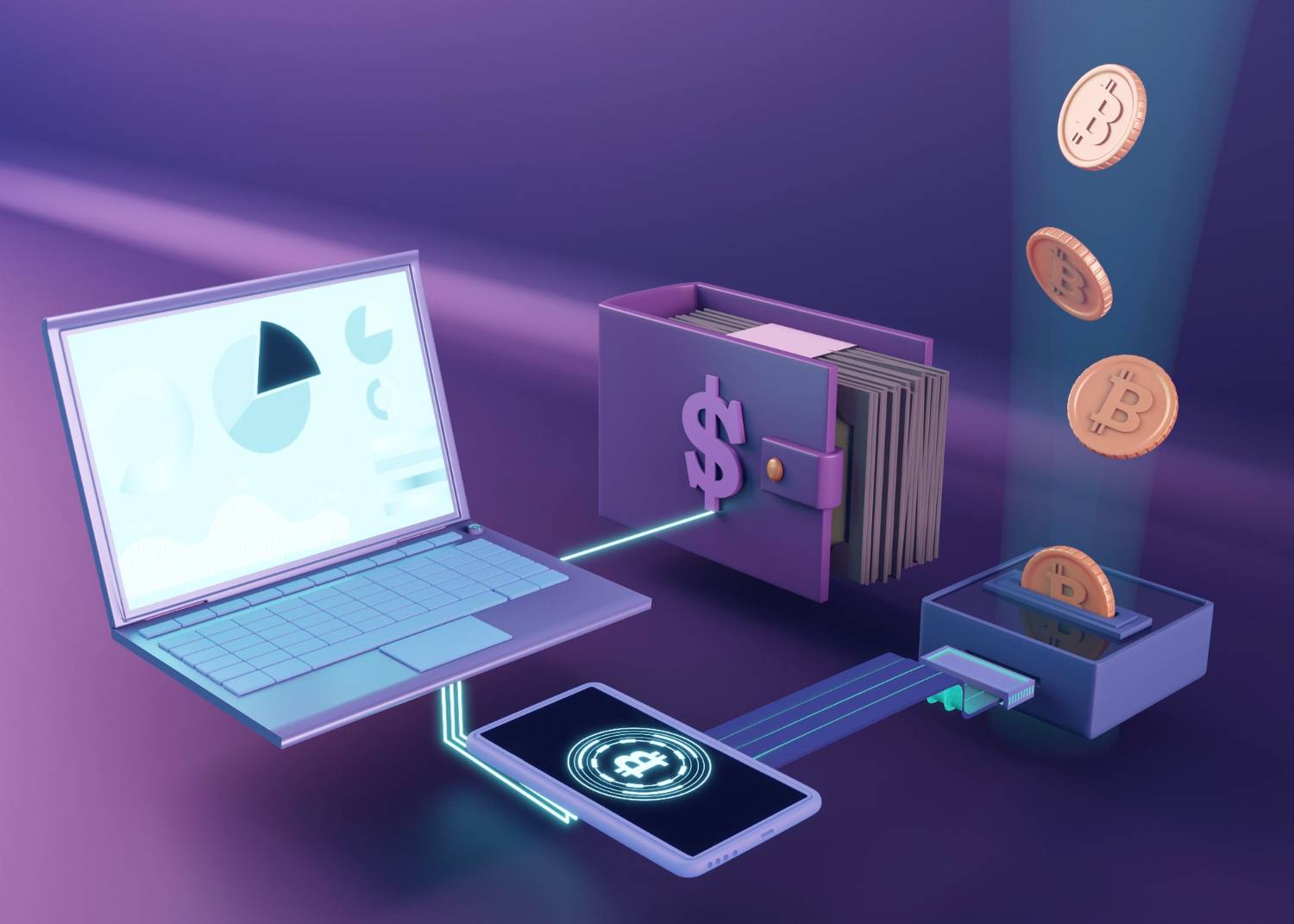The Internet of Things (IoT) is an ever-evolving technology that is taking the world by storm. It’s a term that is often used to describe the connection of everyday objects and devices to the internet. These connections enable devices to share information, data, and interact with each other, making our lives more efficient and connected. With the proliferation of smart homes, connected cars, wearable technology, and more, the Internet of Things has the potential to revolutionize the way we live and work. In this blog post, we’ll take a closer look at what the Internet of Things is, how it works, and some of its most exciting applications. The internet of things (IoT) is revolutionizing the way we live and work. It refers to the interconnected network of physical devices, vehicles, buildings, and other items embedded with sensors, software, and network connectivity that enable them to collect and exchange data. The IoT has become a buzzword in the technology database due to its potential to transform our daily lives. From smart homes to connected cars, the IoT promises to usher in a new era of connectivity and convenience. In this blog post, we’ll delve into the IoT, exploring what it is, how it works, and what it means for the future.
What is the Internet of Things?
The Internet of Things, or IoT, refers to the concept of connecting everyday devices and appliances to the internet. It encompasses the idea that devices can communicate with each other, collect data, and provide valuable insights and actions without human intervention.
In simpler terms, the IoT is all about enabling devices to work smarter and more efficiently. Examples of IoT devices include smart thermostats, home security systems, and even medical devices such as heart monitors.
By connecting these devices to the internet, they can provide real-time data and insights, allowing us to better manage and optimize their usage. For example, a smart thermostat can learn your preferences and adjust the temperature accordingly, helping you save energy and money.
The concept of the IoT has been around for a few decades, but it is only in recent years that it has really taken off. With the widespread adoption of smartphones and other mobile devices, the potential of the IoT has become more apparent than ever before.
Overall, the IoT is about connecting everyday objects to the internet and allowing them to communicate with each other, providing valuable insights and actions for users. It’s a rapidly evolving field with limitless possibilities for innovation and growth.
How does it work?
At its core, the Internet of Things (IoT) refers to the interconnectedness of physical devices, objects, and systems with the internet and with each other. But how does it actually work?
IoT devices typically include sensors, actuators, and embedded microchips that enable them to communicate with each other and with cloud-based applications. These devices are often embedded in everyday objects like appliances, vehicles, or even clothing. They collect and transmit data in real-time to other devices or applications.
For example, a smart home thermostat might monitor the temperature in a room and send that data to an app on your smartphone. That app, in turn, might use that data to adjust the thermostat’s temperature setting. Or a smart car might use its sensors to detect potential obstacles in the road and transmit that information to other vehicles in the area.
The data that IoT devices collect can also be used to improve operational efficiency, optimize processes, and provide new insights into customer behavior. In industries like healthcare, IoT devices can help monitor patients remotely, provide real-time feedback on their conditions, and alert medical professionals if there are any concerning changes.
However, with so many devices connected to the internet, there are also concerns around data privacy and security. The more devices that are connected, the more opportunities there are for hackers to access sensitive information. As such, robust security measures must be put in place to protect both individuals and organizations.
Despite these challenges, the Internet of Things represents a transformative technology with incredible potential. As more and more devices become connected, we will continue to see innovative new applications emerge across a range of industries.
Benefits of IoT
The Internet of Things (IoT) offers numerous benefits that are revolutionizing the way we live and work. Here are some of the most significant advantages of IoT:
- Efficiency: By automating various processes, IoT devices make operations more efficient and streamlined. Smart thermostats, for instance, can automatically adjust the temperature based on your preferences, which saves energy and lowers your electricity bills.
- Convenience: IoT devices are designed to make our lives more convenient. Smart speakers, for example, can be used to order groceries, play music, and control other smart devices with just your voice.
- Improved productivity: IoT-enabled devices can help workers perform their tasks more efficiently, and even take over certain tasks completely. For instance, self-driving vehicles can help reduce human error in the transportation industry, leading to safer and more efficient transport.
- Real-time monitoring: IoT devices can be used to monitor different aspects of our lives in real-time, from our health and fitness to the condition of our homes and cars. This can help us stay aware of any potential problems and take prompt action to avoid them.
- Personalization: IoT devices can be tailored to meet our individual needs and preferences. For instance, smart home systems can be customized to turn on the lights, music, and heating just the way you like it when you arrive home.
Overall, IoT offers numerous benefits that are transforming the way we live, work, and interact with the world around us. By enabling devices to connect and communicate with each other, IoT is driving innovation across multiple industries, and paving the way for a smarter, more connected world.
Industries utilizing IoT technology
The potential of IoT has been recognized by many industries, leading to its rapid adoption. Some of the most common industries that are using IoT technology include:
- Healthcare – IoT technology is being used in various applications in the healthcare industry, including remote patient monitoring, drug tracking, and asset tracking. These applications are enabling healthcare providers to improve patient outcomes, reduce costs, and enhance patient experiences.
- Manufacturing – IoT technology is revolutionizing the manufacturing industry by enabling better predictive maintenance, quality control, and supply chain management. By connecting various machines and equipment, manufacturers can monitor performance and gather valuable data that can be used to improve processes.
- Retail – Retailers are using IoT technology to create personalized experiences for customers. For instance, they are using beacons to send push notifications and offer discounts to customers when they are near the store. IoT technology is also being used for inventory management, which is reducing stockouts and improving supply chain management.
- Agriculture – IoT technology is being used in agriculture to optimize crop yields and reduce waste. Farmers are using sensors to gather data on temperature, humidity, and soil moisture, which is helping them make better decisions on crop management.
- Transportation – IoT technology is transforming the transportation industry by enabling real-time tracking and monitoring of vehicles. This is helping companies optimize routes, improve fuel efficiency, and enhance driver safety.
These are just a few examples of industries that are using IoT technology to transform their operations. As more companies adopt IoT technology, the potential for innovation and growth is endless. However, as with any emerging technology, there are challenges to overcome.
Challenges with IoT adoption
As with any emerging technology, there are several challenges that come with adopting IoT. Here are a few key obstacles to consider:
- Security Concerns: As more and more devices are connected to the internet, the potential for security breaches increases. This is particularly concerning in industries where privacy and security are of utmost importance, such as healthcare and financial services. IoT devices must be designed with strong security features to mitigate these risks.
- Interoperability Issues: IoT devices are typically made by different manufacturers and run on different platforms, which can make it difficult to ensure they can all communicate with one another seamlessly. Standards must be developed to ensure that IoT devices can work together in a way that’s easy for end-users to manage.
- Cost and Scalability: For companies, the cost of deploying IoT technology across their entire business can be significant. Additionally, IoT networks can become complex as the number of devices increases, making it difficult to manage at scale.
- User Adoption: IoT technology is still relatively new, and not everyone is familiar with its capabilities. It can be a challenge to get end-users on board with adopting new devices or applications, particularly if they’re accustomed to existing tools or processes.
Despite these challenges, the benefits of IoT are clear. As companies and industries continue to recognize the value of connected devices and applications, we can expect to see significant advancements in the way we work, live, and interact with the world around us.
Future of IoT
As IoT continues to expand, the possibilities for its future are limitless. Experts predict that by 2025, there will be over 75 billion IoT connected devices. This number represents an exponential growth from today’s approximately 30 billion connected devices. This advancement in technology and connectivity will enable more efficient and effective communication, automation, and data processing, leading to an overall increase in productivity and quality of life.
In the future, we can expect IoT to continue to improve healthcare, manufacturing, transportation, and energy efficiency. Healthcare professionals will be able to monitor patients remotely, and factories will have automated processes and smart inventory systems. IoT devices will also continue to enhance transportation through predictive maintenance and intelligent traffic systems. Moreover, IoT technology can contribute to minimizing the carbon footprint of businesses by optimizing energy usage.
The adoption of 5G technology will provide IoT devices with faster data speeds and less latency, leading to more accurate real-time data analysis. This technological revolution will enable even more IoT-enabled devices to be interconnected and integrated.
Conclusion
The Internet of Things has revolutionized the way we live, work, and interact with our surroundings. With billions of devices and sensors connected to the internet, the potential of IoT is immense. From improving productivity in industries to making our homes more efficient, IoT has transformed the way we live our daily lives.
Despite the many benefits, there are challenges to the widespread adoption of IoT technology, including security concerns and interoperability issues. However, as more and more industries embrace IoT, the future of the technology looks bright.
In conclusion, the Internet of Things has the power to create a connected world that enhances our lives in ways we never imagined. By embracing this technology, we can unlock endless possibilities and pave the way for a better future.
My name is William shakes and I’m a business strategist who specializes in sales, outreaching and marketing strategies for businesses of all sizes, currently working at AverickMedia one of the leading providers of industry email list. I have a deep understanding of what it takes to drive success and have an extensive network of industry experts that I can draw upon when needed.

![[Solved] How to Recover Deleted Tasks in Outlook](https://onlinedrifts.com/wp-content/uploads/2020/02/recover-deleted-tasks-in-outlook.png)


